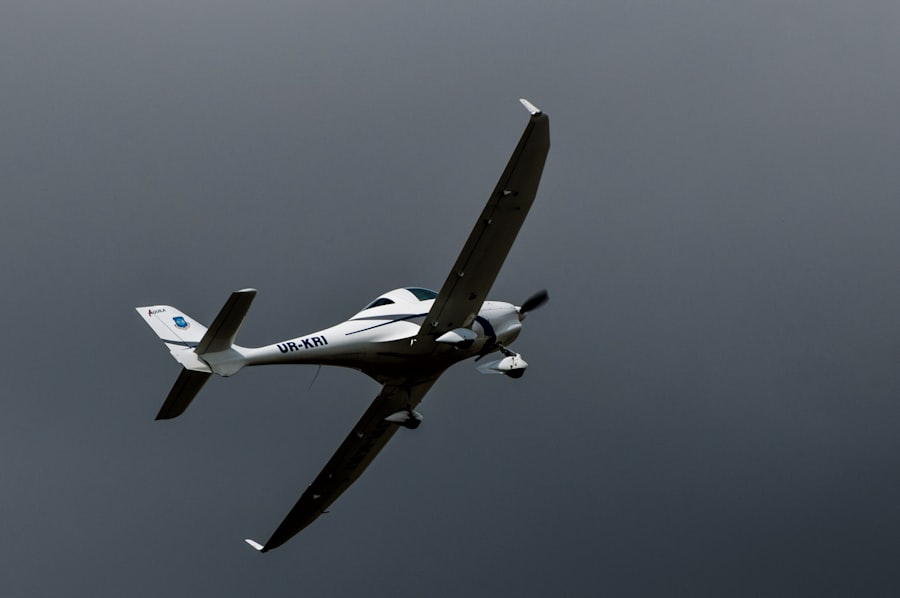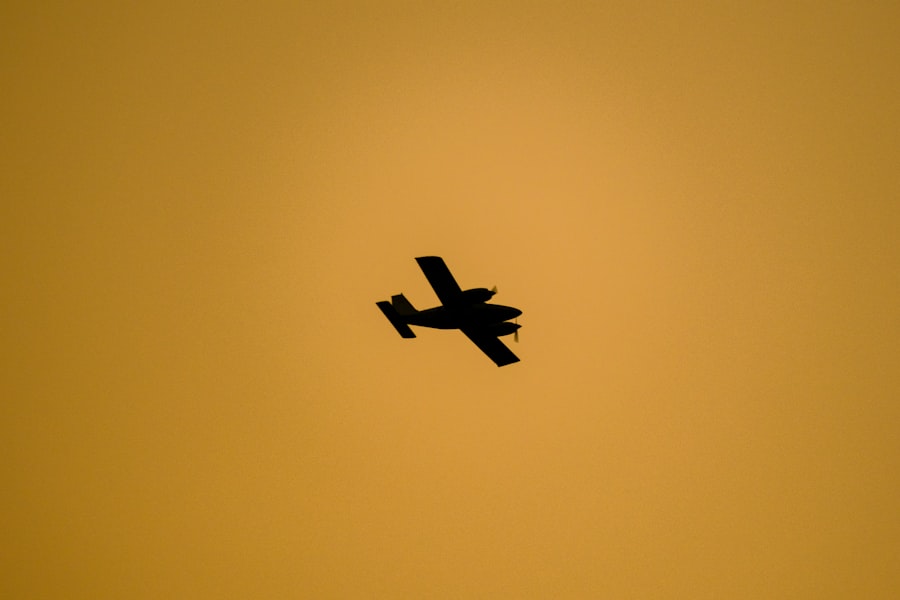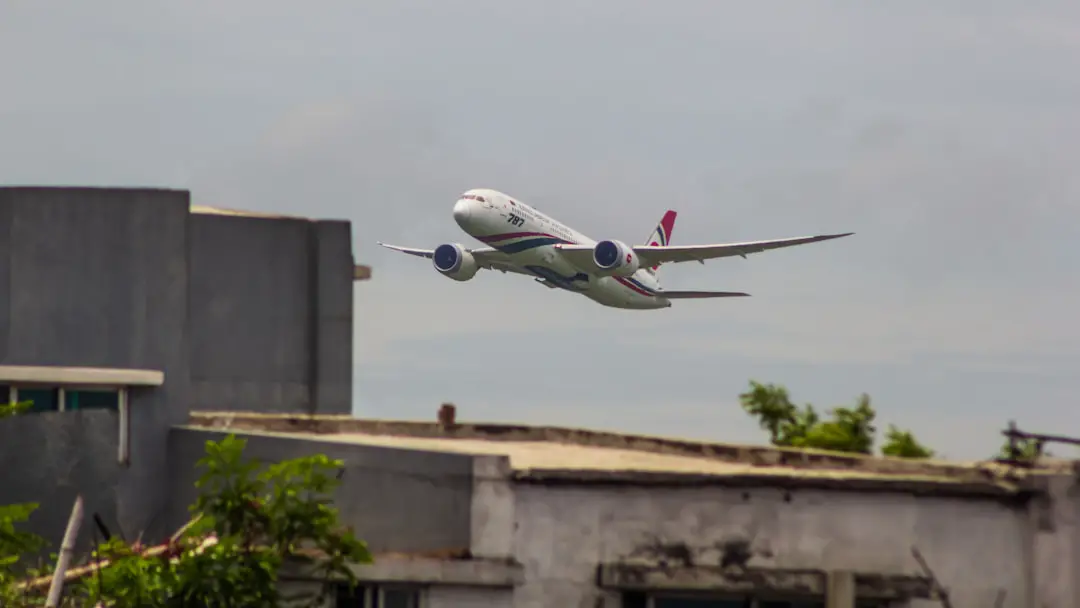Altitude limits in aviation are a critical aspect of aircraft operation, influencing everything from fuel efficiency to passenger comfort and safety. The concept of altitude encompasses a range of heights above sea level, and each aircraft is designed with specific operational ceilings that dictate how high it can fly. These limits are not arbitrary; they are the result of extensive engineering, regulatory frameworks, and the physical laws governing flight.
Understanding altitude limits is essential for pilots, engineers, and aviation enthusiasts alike, as it provides insight into the complexities of flight dynamics and the challenges faced by aircraft at various heights. The significance of altitude limits extends beyond mere numbers; they are intertwined with the principles of aerodynamics, atmospheric conditions, and human physiology. As aircraft ascend, they encounter changes in air pressure and temperature, which can affect engine performance and passenger comfort.
Moreover, altitude limits are influenced by regulatory bodies that establish guidelines to ensure safety in the skies. This article delves into the various aspects of altitude limits in aviation, exploring cruising altitudes, factors affecting maximum altitude, aircraft design considerations, and the implications of high-altitude flight on human physiology.
Key Takeaways
- Altitude limits in aviation are crucial for the safety and performance of aircraft.
- Cruising altitude is the optimal height at which an aircraft operates during a flight.
- Factors such as weight, temperature, and air density affect the maximum altitude an aircraft can reach.
- Aircraft design plays a significant role in determining altitude limits, including the use of pressurization systems.
- Oxygen and pressurization are essential for high altitude flights to ensure the well-being of passengers and crew.
The Concept of Cruising Altitude
Cruising altitude refers to the height at which an aircraft maintains a steady flight after climbing to its desired altitude. This phase of flight is crucial for optimizing fuel efficiency and ensuring a smooth ride for passengers. Typically, commercial airliners cruise at altitudes ranging from 30,000 to 40,000 feet, where the air is thinner, resulting in reduced drag on the aircraft.
At these altitudes, engines operate more efficiently, allowing for longer distances to be covered with less fuel consumption. The choice of cruising altitude is influenced by several factors, including air traffic control regulations, weather conditions, and the specific performance characteristics of the aircraft. The cruising altitude is not a fixed value; it can vary based on the flight plan and operational requirements.
For instance, during long-haul flights, pilots may choose to fly at higher altitudes to take advantage of favorable winds known as jet streams. These high-altitude winds can significantly enhance fuel efficiency and reduce travel time. Conversely, during takeoff and landing phases, aircraft operate at much lower altitudes due to safety considerations and proximity to airports.
Factors Affecting the Maximum Altitude of an Aircraft

Several factors determine the maximum altitude an aircraft can achieve, including engine performance, aerodynamic design, and weight considerations. Engine performance is paramount; as an aircraft ascends, the air becomes less dense, which can affect engine thrust. Turbofan engines, commonly used in commercial jets, are designed to operate efficiently at high altitudes but have limitations based on their design specifications.
The maximum operating altitude is often dictated by the engine’s ability to produce sufficient thrust to maintain level flight. Aerodynamic design also plays a crucial role in determining altitude limits. Aircraft are engineered with specific wing shapes and sizes that influence lift generation.
As altitude increases, the air density decreases, which can lead to reduced lift. Engineers must strike a balance between weight and lift capabilities when designing an aircraft to ensure it can reach its intended operational ceiling. Additionally, the weight of the aircraft itself—affected by factors such as fuel load and passenger capacity—can limit its ability to climb to higher altitudes.
A heavier aircraft requires more lift and thrust to ascend, which can constrain its maximum operational altitude.
The Role of Aircraft Design in Determining Altitude Limits
| Factors | Impact on Altitude Limits |
|---|---|
| Aircraft Weight | Heavier aircraft may have lower altitude limits due to increased fuel consumption and reduced engine performance |
| Aerodynamics | Efficient aerodynamic design can allow for higher altitude limits by reducing drag and improving fuel efficiency |
| Engine Performance | High-performance engines can enable aircraft to reach higher altitudes, while lower performance engines may limit altitude capabilities |
| Structural Strength | Aircraft with stronger structures can withstand higher atmospheric pressures at higher altitudes, allowing for increased altitude limits |
| Avionics and Navigation Systems | Advanced avionics and navigation systems can enhance situational awareness and safety, potentially allowing for higher altitude operations |
Aircraft design is a multifaceted discipline that encompasses aerodynamics, materials science, and structural engineering. Each design element contributes to an aircraft’s ability to reach and maintain specific altitudes. For instance, the shape of an aircraft’s wings is critical for generating lift; wings with a higher aspect ratio tend to perform better at higher altitudes due to their ability to maintain lift in thinner air.
Additionally, advancements in materials technology have allowed for lighter yet stronger structures, enabling aircraft to carry more weight while still achieving high altitudes. The integration of advanced avionics also plays a significant role in altitude management. Modern aircraft are equipped with sophisticated systems that monitor altitude and provide real-time data to pilots.
These systems help optimize flight paths and ensure compliance with air traffic control regulations. Furthermore, innovations in wing design—such as winglets—have been introduced to reduce drag and improve fuel efficiency at cruising altitudes. As technology continues to evolve, aircraft design will likely adapt to push the boundaries of altitude limits even further.
The Importance of Oxygen and Pressurization at High Altitudes
As aircraft ascend into higher altitudes, the atmospheric pressure decreases significantly, leading to a corresponding drop in oxygen levels. At cruising altitudes above 10,000 feet, supplemental oxygen becomes essential for both crew and passengers to prevent hypoxia—a condition caused by insufficient oxygen supply that can impair cognitive function and physical performance. Commercial airlines are equipped with oxygen masks that deploy automatically in case of cabin depressurization or other emergencies.
Pressurization systems are vital for maintaining a safe and comfortable environment within the cabin at high altitudes. These systems work by compressing air within the cabin to counteract the low external pressure. The cabin is typically pressurized to an equivalent altitude of around 6,000 to 8,000 feet, allowing passengers to breathe comfortably without supplemental oxygen during normal operations.
The engineering behind pressurization involves careful calculations to ensure structural integrity while accommodating changes in altitude during ascent and descent.
The Impact of Weather on Aircraft Altitude

Weather conditions play a significant role in determining an aircraft’s operational altitude during flight. Factors such as turbulence, wind patterns, and storm systems can influence altitude decisions made by pilots. For instance, flying through turbulent air can be uncomfortable for passengers and may require pilots to adjust their altitude to find smoother air.
Additionally, weather phenomena like thunderstorms can pose serious risks; pilots often avoid flying through or near these systems by altering their flight paths or altitudes. Wind patterns at high altitudes can also affect fuel efficiency and travel time. Jet streams—fast-flowing air currents found in the upper atmosphere—can provide significant tailwinds that enhance an aircraft’s speed when flying in the same direction.
Conversely, headwinds can slow down an aircraft’s progress and increase fuel consumption. Pilots utilize weather data and forecasts to make informed decisions about cruising altitudes that optimize performance while ensuring safety.
Regulations and Restrictions on Aircraft Altitude
Regulatory bodies such as the Federal Aviation Administration (FAA) in the United States and the International Civil Aviation Organization (ICAO) establish guidelines governing aircraft operations at various altitudes. These regulations are designed to ensure safety in crowded airspace and minimize the risk of mid-air collisions. Air traffic control (ATC) plays a crucial role in managing altitude assignments for commercial flights based on established airways and traffic patterns.
Altitude restrictions may also be imposed due to environmental considerations or noise abatement procedures near airports. For example, certain areas may have designated flight paths that require aircraft to maintain specific altitudes during takeoff or landing to minimize noise pollution for communities below. Compliance with these regulations is essential for maintaining safe operations within controlled airspace while balancing environmental concerns.
The Highest Altitudes Reached by Commercial Airlines
Commercial airlines typically operate within a defined range of cruising altitudes; however, there have been instances where flights have reached remarkable heights due to specific circumstances or technological advancements.
This supersonic jet was designed for high-altitude travel and could fly above most weather disturbances while significantly reducing travel time across long distances.
In recent years, advancements in aviation technology have led some airlines to explore higher operational ceilings for conventional jets as well. Aircraft like the Boeing 787 Dreamliner and Airbus A350 are designed with improved aerodynamics and engine efficiency that allow them to operate effectively at higher altitudes than previous generations of commercial jets. While these advancements may not reach the extremes of supersonic travel, they represent a significant step forward in optimizing performance at elevated heights.
The Altitude Limits of Military and Experimental Aircraft
Military aircraft often operate at much higher altitudes than commercial airliners due to their unique mission profiles and design specifications. For example, reconnaissance planes like the U-2 can fly at altitudes exceeding 70,000 feet, allowing them to gather intelligence while remaining above most surface-to-air threats. These aircraft are equipped with specialized systems that enable them to operate effectively in thin air where conventional jets would struggle.
Experimental aircraft also push the boundaries of altitude limits as engineers test new technologies and designs. The X-15 rocket plane holds the record for the highest altitude achieved by a manned aircraft at over 354,000 feet during its missions in the 1960s. Such experimental flights provide valuable data that informs future aerospace developments and contributes to our understanding of high-altitude flight dynamics.
The Future of High Altitude Flight
The future of high-altitude flight is poised for exciting developments as advancements in technology continue to reshape aviation capabilities. Concepts such as urban air mobility (UAM) envision electric vertical takeoff and landing (eVTOL) vehicles operating at lower altitudes within urban environments while potentially utilizing higher altitudes for longer-distance travel between cities. These innovations could revolutionize transportation by reducing congestion on roadways and providing faster alternatives for short-haul flights.
Additionally, research into hypersonic travel—defined as speeds exceeding Mach 5—holds promise for drastically reducing travel times across continents by flying at extremely high altitudes where atmospheric drag is minimized. Companies like SpaceX are exploring suborbital flights that could allow passengers to experience space-like conditions while traveling between major cities within hours rather than days.
The Fascinating World of Aircraft Altitude Limits
The exploration of altitude limits in aviation reveals a complex interplay between engineering principles, regulatory frameworks, human physiology, and environmental factors. From cruising altitudes that optimize fuel efficiency to the challenges posed by weather conditions and regulatory restrictions, understanding these dynamics is essential for anyone involved in aviation or simply fascinated by flight. As technology continues to advance and new concepts emerge on the horizon—such as hypersonic travel or urban air mobility—the world of aircraft altitude limits will undoubtedly evolve further, offering new possibilities for exploration and transportation in our ever-connected world.
If you’re curious about the altitude at which airlines fly, you may also be interested in learning about the best travel skirts for women this spring 2025. Check out this article here to find stylish and practical options for your next trip.
FAQs
What is the typical cruising altitude for commercial airlines?
The typical cruising altitude for commercial airlines is between 30,000 and 40,000 feet.
Why do airlines fly at high altitudes?
Airlines fly at high altitudes to take advantage of thinner air, which reduces drag and allows for more fuel-efficient flight.
How high can commercial airplanes fly?
Commercial airplanes can fly as high as 45,000 feet, but most operate between 30,000 and 40,000 feet.
What are the benefits of flying at high altitudes?
Flying at high altitudes allows for smoother air, reduced fuel consumption, and faster travel times due to the thinner air and reduced drag.
Are there any risks associated with flying at high altitudes?
Flying at high altitudes can pose risks such as hypoxia (lack of oxygen), decompression sickness, and the potential for turbulence. However, modern aircraft are equipped to mitigate these risks.
